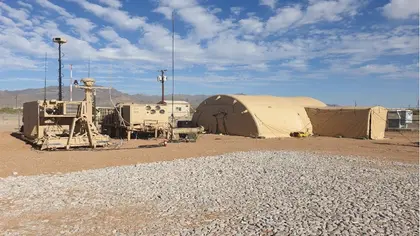Everyone was surprised that Ukraine’s air defense shot down more than a dozen of Russia’s most modern ground attack aircraft as well as a $350 million aerial listening post at long range in just 12 days in February.
Theories abounded: Had they got hold of a new long-range air defense weapon? Were special forces on the ground carrying out close-in shoots? Was it just a statistical anomaly -they were flying many more sorties in support of the assault on Avdiivka so presenting more targets? Was there simply a breakdown in Russian airspace command and control allowing its aircraft to present a more vulnerable operational profile?
JOIN US ON TELEGRAM
Follow our coverage of the war on the @Kyivpost_official.
One theory that was doing the rounds was that Ukraine’s Air Forces (UAF) were somehow remotely deploying its Patriot missile batteries separate from their radars, which the Russians could detect, and their ground control stations and so using their full 150-kilometer (90-mile) range and hitting Moscow’s aircraft from an unexpected direction.
That didn’t explain how they hit the Beriev A-50 AWE&C aircraft over the Sea of Azov that was at least 190 kilometers (120 miles) away from the nearest known Ukrainian positions even if, as the UAF said, they used the Soviet-era S-200 air defense missile to carry out the attack. The A-50 would have readily identified that it had been “painted” by the S-200’s powerful radar control system and would surely have tried to move away.

Drone Strike Damages Another Russian Radar Station in Occupied Crimea
David Axe, a US military correspondent writing in the UK’s Daily Telegraph has offered a possible explanation which, if true, may be an example of the US taking the opportunity that the war in Ukraine presents to “field test” a new item of equipment.
President Biden, when announcing a $2.2 billion aid package in February 2023, said that it included “equipment to integrate Western air-defense launchers, missiles and radars with Ukraine’s air-defense systems.” Axe suggested that this might refer to a system known as the Integrated Battle Command System (IBCS) which had been under development with the manufacturer, Northrop Grumman and the US Department of Defense (DoD) for the best part of ten years.
IBCS is designed to “integrate multiple sensors and weapon systems into a unified network for improved battlefield capabilities,” that creates a complete picture of the air environment in a defined area allowing selection of the most appropriate weapon to take on aircraft and missiles. More importantly it does not tie a particular sensor to an individual missile launcher.
Range testing between 2018 and 2020 had proven the equipment’s ability to combine a wide range of missile systems, radars and other sensors to identify, track, and engage targets as diverse as aircraft, cruise and ballistic missiles launched at different times, speeds, and altitudes.
By May 2023 IBCS received initial operational capability certification then in September Poland, whose armed forces had been involved in supporting the development trials, applied to purchase a large number of the systems.
As Axe pointed out Poland has been one of the biggest suppliers of air-defense equipment to Kyiv and could have included IBCS in its aid packages which would, in theory, link up not only the latest Western radars and missile launchers but also old Soviet kit.
This could explain how Russian aircraft were ambushed. Thinking they were beyond the 50-kilometer (30 mile) range of say the radar associated with NASAMS (Norwegian Advanced Surface-to-Air Missile System), it would come as a nasty surprise to be hit by an S-200 with its range of 300 kilometers (190 mile) from an entirely unexpected direction.
You can also highlight the text and press Ctrl + Enter






